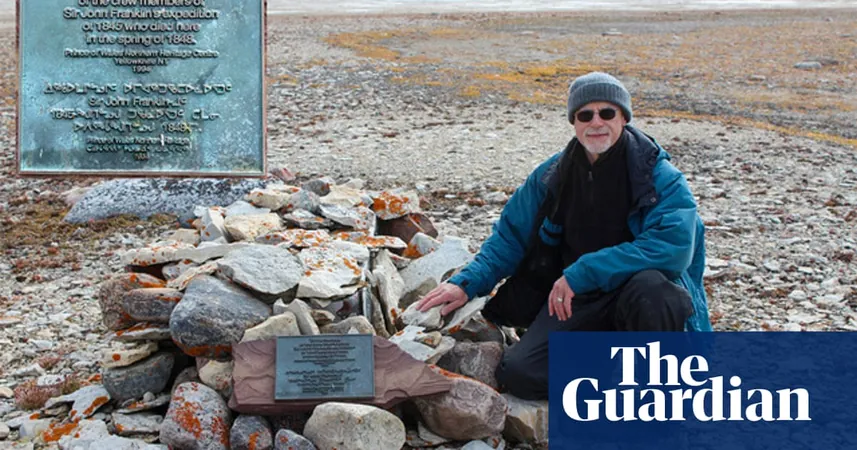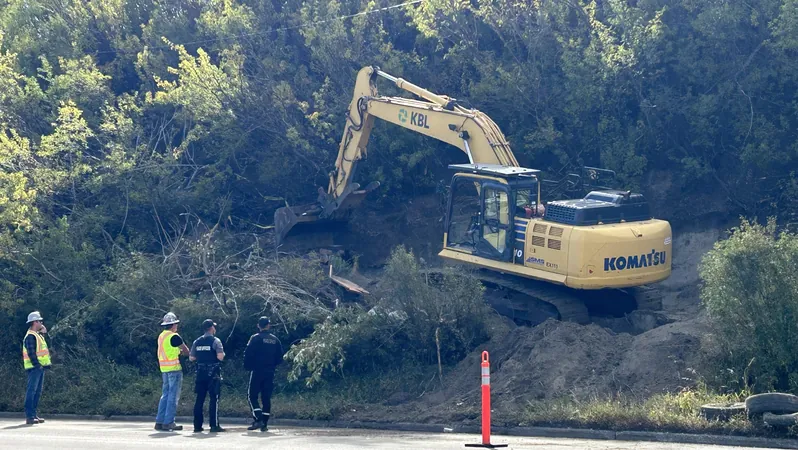
Unraveling the Chilling Mystery: DNA Reveals Identity of Franklin Expedition Victim Linked to Cannibalism and Survival Dilemmas
2024-09-25
Introduction
The remains of sailors who perished in Sir John Franklin’s doomed Northwest Passage expedition have lingered on the icy shores of an Arctic island for over a hundred years, revealing a haunting chapter of maritime history. Among the skeletal remains, gruesome evidence points to a reality that many might find shocking: nearly a quarter of these bones show signs of cannibalism. This gruesome discovery uncovers a tragic end to what was once a celebrated expedition.
Identification of Captain James Fitzjames
Recent breakthroughs in genetic research have identified one of these unfortunate souls as Captain James Fitzjames from London. A team of dedicated researchers from two Canadian universities successfully extracted DNA from a single molar and traced it to his living descendants, bringing to light Fitzjames’ profound but tragic legacy.
Fitzjames' Legacy and the Expedition
Captaining the HMS Erebus, Fitzjames was an experienced naval officer who had previously sailed across the globe, from Egypt to the Americas. In 1845, he set sail alongside HMS Terror, embarking on what would become one of the most infamous expeditions in British history, with hopes of navigating the elusive Northwest Passage. Tragically, all 129 crew members would ultimately fall victim to the unforgiving Arctic environment.
Discovery and Research Efforts
Between 1847 and 1859, at least 36 expeditions sought to uncover the mysteries surrounding the disappearance of Franklin's fleet. Frustratingly, they met with failure time and time again. It was only through the oral histories preserved by Inuit communities that researchers finally located the wreckage of the Erebus and Terror within the last decade.
The Remains and Survival Challenges
The crew members’ remains were unearthed earlier at two locations on the southwest coast of King William Island, Nunavut. Evidence suggests that these sailors were attempting to travel overland, likely bound for resources in the Back River region, but only to face a harrowing fate.
Critical Questions and Insights
Douglas Stenton, an adjunct professor of anthropology at the University of Waterloo and leading investigator on this remarkable project, emphasized the critical questions that remain: “What were the survivors’ plans after abandoning their ships? How did they travel? And why did we find so many bodies concentrated at one location?” He noted that the catastrophic outcomes experienced by the Franklin expedition are unmatched in British polar exploratory history.
Artifacts and Harrowing Accounts
Among the poignant artifacts left behind is a distressing note authored by Fitzjames. This last testament, discovered years later at Victory Point, announced Franklin’s death on June 11, 1847, and detailed the harrowing losses among the crew, who faced dire challenges ahead.
Victorian Reactions and Anthropological Insights
Although the site of Fitzjames’ demise was known since the 1860s, whispers of cannibalism shocked Victorian England, fueled by Inuit testimony. This notion was further supported in the 1990s by anthropologist Anne Keenleyside, who discovered cut marks on many of the bones, indicating human intervention.
Confirmation of Fitzjames' Identity
In an intriguing turn of events, after receiving samples from 25 potential descendants in 2017, researchers found a genetic match from a molar etched with knife marks, confirming the identity of Captain James Fitzjames. This groundbreaking finding now brings to light the broader struggles of the 105 crew members, only two of whom have been positively identified since their deaths.
Reframing Understanding of the Expedition's Final Days
Uncovering the truth behind the crew’s demise revealed a harrowing tale marked by scurvy, hypothermia, and the desperate act of cannibalism. Stenton described the grim realities faced at the site, highlighting the extreme measures the crew resorted to in their struggle for survival—efforts that ultimately did little to prolong their lives, but underscored the profound desperation of their circumstances.
Legacy of Inuit Knowledge
Significantly, this ongoing research reframes our comprehension of the final days of the expedition, illuminating how Inuit insights have significantly aided researchers in locating the wrecks while challenging other narratives tied to the site. Discrepancies do exist, particularly regarding the vivid descriptions of cannibalism, and as Stenton noted, verifying some claims remains a complex undertaking.
Conclusion and Reflection
As exploration of this tragic historical event continues, the findings shed light on human endurance and the dark realities that can surface in the depths of despair. The Franklin Expedition serves as a stark reminder of the risks faced by explorers and the lengths to which one may go to survive amidst the unforgiving wilderness.









 Brasil (PT)
Brasil (PT)
 Canada (EN)
Canada (EN)
 Chile (ES)
Chile (ES)
 España (ES)
España (ES)
 France (FR)
France (FR)
 Hong Kong (EN)
Hong Kong (EN)
 Italia (IT)
Italia (IT)
 日本 (JA)
日本 (JA)
 Magyarország (HU)
Magyarország (HU)
 Norge (NO)
Norge (NO)
 Polska (PL)
Polska (PL)
 Schweiz (DE)
Schweiz (DE)
 Singapore (EN)
Singapore (EN)
 Sverige (SV)
Sverige (SV)
 Suomi (FI)
Suomi (FI)
 Türkiye (TR)
Türkiye (TR)